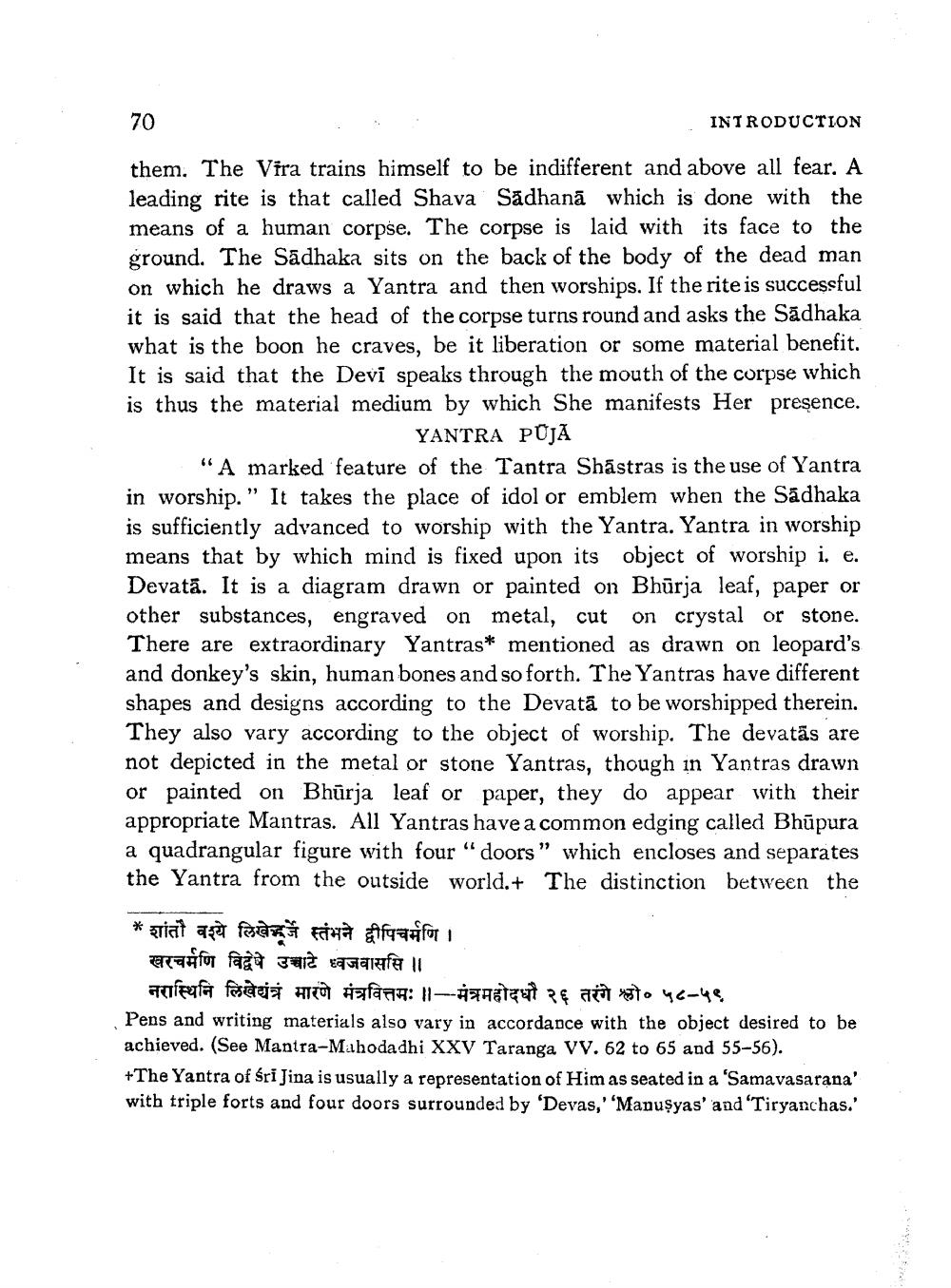________________
70
them. The Vira trains himself to be indifferent and above all fear. A leading rite is that called Shava Sadhana which is done with the means of a human corpse. The corpse is laid with its face to the ground. The Sadhaka sits on the back of the body of the dead man on which he draws a Yantra and then worships. If the rite is successful it is said that the head of the corpse turns round and asks the Sadhaka what is the boon he craves, be it liberation or some material benefit. It is said that the Devi speaks through the mouth of the corpse which is thus the material medium by which She manifests Her presence. YANTRA PUJA
INTRODUCTION
"A marked feature of the Tantra Shastras is the use of Yantra in worship." It takes the place of idol or emblem when the Sadhaka is sufficiently advanced to worship with the Yantra. Yantra in worship means that by which mind is fixed upon its object of worship i. e. Devata. It is a diagram drawn or painted on Bhurja leaf, paper or other substances, engraved on metal, cut on crystal or stone. There are extraordinary Yantras* mentioned as drawn on leopard's and donkey's skin, human bones and so forth. The Yantras have different shapes and designs according to the Devata to be worshipped therein. They also vary according to the object of worship. The devatās are not depicted in the metal or stone Yantras, though in Yantras drawn or painted on Bhurja leaf or paper, they do appear with their appropriate Mantras. All Yantras have a common edging called Bhupura a quadrangular figure with four "doors" which encloses and separates the Yantra from the outside world.+ The distinction between the
* शांतौ वश्ये लिखेद्भूर्जे स्तंभने द्वीपिचर्मणि ।
खरचर्मणि विद्वेषे उच्चाटे ध्वजवाससि ।।
नरास्थिनि लिखेयंत्र मारणे मंत्रवित्तमः ॥ - मंत्रमहोदधौ २६ तरंगे लो० ५८-५९
Pens and writing materials also vary in accordance with the object desired to be achieved. (See Mantra-Mahodadhi XXV Taranga VV. 62 to 65 and 55-56).
+The Yantra of śri Jina is usually a representation of Him as seated in a 'Samavasarana' with triple forts and four doors surrounded by 'Devas,' 'Manuṣyas' and 'Tiryanchas.'




